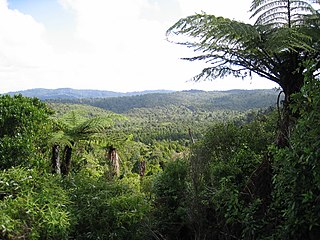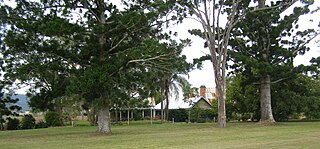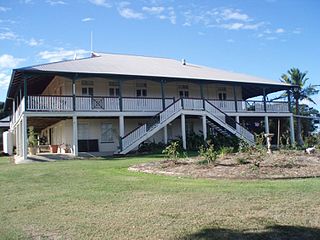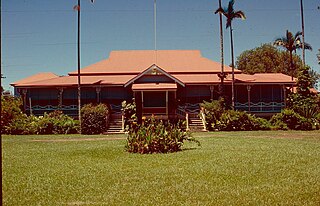
The Waitākere Ranges is a mountain range in New Zealand. Located in West Auckland between metropolitan Auckland and the Tasman Sea, the ranges and its foothills and coasts comprise some 27,720 hectares of public and private land. The area, traditionally known to Māori as Te Wao Nui o Tiriwa, is of local, regional, and national significance. The Waitākere Ranges includes a chain of hills in the Auckland Region, generally running approximately 25 kilometres (16 mi) from north to south, 25 km west of central Auckland. The ranges are part of the Waitākere Ranges Regional Park.

Karekare is a small coastal settlement in West Auckland, New Zealand, sandwiched between the Waitākere Ranges and a large black sand surf beach.

Whatipu is a remote beach on the west coast of the Auckland Region in the North Island of New Zealand. The Whatipu area has been managed as a scientific reserve by the Auckland Regional Council since 2002. The road to it is unsealed. To the south of Whatipu is Manukau Harbour. To the north is Karekare. Whatipu is located at the southern end of the Waitākere Ranges. Shifting sands have substantially changed the beach since the 1940s. Over 6 square kilometres has been added to the beach since then.

Glenmore Homestead is a heritage-listed homestead at Belmont Road, Parkhurst, Rockhampton Region, Queensland, Australia. It was built from c. 1858 to c. 1920. The homestead and associated buildings once belonged to pastoral run on the Fitzroy River, seven kilometres northwest of Rockhampton, Queensland. Originally much larger at 127 square miles the current size of the property is 20 acres (8.1 ha). It was added to the Queensland Heritage Register on 21 October 1992.

Canning Downs was the first residential establishment built by a white person on the Darling Downs in Queensland, Australia. It is located a short drive from the town of Warwick and originally extended south east to Killarney and the McPherson Range. The area was first named after the British statesman George Canning by Allan Cunningham.

Carlton House is a heritage-listed boarding house at 3 Mill Street, Toowoomba, Toowoomba Region, Queensland, Australia. It was built from c. 1875 to 1900s. It was added to the Queensland Heritage Register on 31 October 1994.

Cressbrook Homestead is a heritage-listed homestead at off Cressbrook-Caboombah Road, Cressbrook, Somerset Region, Queensland, Australia. It was built from 1841 to 1914. It was added to the Queensland Heritage Register on 21 October 1992.

Booubyjan Homestead is a heritage-listed homestead at Booubyjan Road, Booubyjan, Gympie Region, Queensland, Australia. It was built from the 1860s to the 1870s circa. It was added to the Queensland Heritage Register on 21 October 1992.

Glengarry Homestead is a heritage-listed homestead at Gladstone-Monto Road, Boynedale, Gladstone Region, Queensland, Australia. It was built from c. 1894 to c. 1920. It was added to the Queensland Heritage Register on 21 October 1992.

Raglan Homestead is a heritage-listed homestead at Raglan Station Road, Raglan, Queensland, Australia. It was built from c. 1857 to 1913. It is also known as Raglan Station. It was added to the Queensland Heritage Register on 21 October 1992.

Greenmount Homestead is a heritage-listed homestead at Greenmount Road, Walkerston, Mackay Region, Queensland, Australia. It was designed by William Sykes and built in 1915 by Arthur Carter & Co. It was added to the Queensland Heritage Register on 6 September 1993.

Strathmore Homestead is a heritage-listed homestead at Strathmore Station on Strathmore Road, Springlands, Whitsunday Region, Queensland, Australia. It was built from the 1860s onward. It is also known as Strathmore Station. It was added to the Queensland Heritage Register on 13 November 2008.

Gunnawarra Homestead is a heritage-listed homestead at Gunnawarra Road, Gunnawarra, Tablelands Region, Queensland, Australia. It was built from 1878 to 1908. It was added to the Queensland Heritage Register on 21 October 1992.

Elderslie Homestead is a heritage-listed homestead at the Elderslie Station, Winton–Boulia Road, Middleton, Shire of Winton, Queensland, Australia. It was built from 1881 to c. 1912. It was added to the Queensland Heritage Register on 21 October 1992.

The Piha Tramway was from 1906 to 1921 a 3-foot (910 mm) bush tramway in New Zealand, the steepest sections of which were operated on inclines by steam-powered cable winches.

The Judges House is a heritage-listed former gentleman's villa residence and homeless shelter and now corporates offices and restaurant located at 529 - 531 Kent Street, Sydney, New South Wales, Australia. Its design is attributed to William Harper. The property has been sub-divided. The lot on which the main structure of the Judges House stands is numbered 531, while number 529 contains the Japanese-influenced modern addition to the back of the property together with sections of the former garden. The modern addition was previously the Suntory Restaurant and now houses Tetsuya's restaurant. The property is privately owned. It was added to the New South Wales State Heritage Register on 2 April 1999.

Paratutae Island, also known as Paratūtai Island, is an island off New Zealand at the mouth of the Manukau Harbour, at Whatipu in the Waitākere Ranges area.

The McNicol Homestead is a historic 19th century homestead located in Clevedon that is listed as a Category II building by Heritage New Zealand.

Ockleston House was a historic house in Hobsonville, Auckland, New Zealand. Constructed in the 19th century as a cottage it was expanded over the years into a large house. During the construction of the Upper Harbour Motorway the property was demolished. Prior to demolition it was dismantled carefully for archaeological evaluation.

Pararaha Stream is a stream of the Auckland Region of New Zealand's North Island. It flows westwards from its sources in the Waitākere Ranges through the Waitākere Ranges Regional Park, and enters the Tasman Sea at Pararaha Bay, north of Whatipu.

























